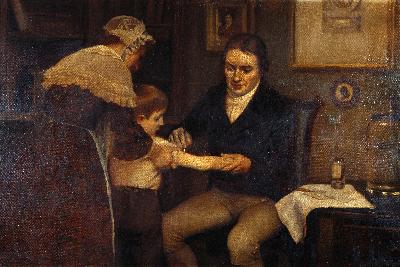Glass ampules containing freeze-dried BCG vaccine, provided by Unicef
Maker and role
Evans Medical Limited
Production date
1980-1985
See full details
Details
Description
Held by the Science Museum
Copyright: The Board of Trustees of the Science Museum
Copyright: The Board of Trustees of the Science Museum
History
The BCG (Bacillus Calmette-Guérin) vaccine is used to protect people from tuberculosis. The vaccine was developed by French bacteriologists Albert Calmette (1863-1933) and Camille Guérin (1872-1961) in 1921.
The BCG immunisation programme was introduced in the UK in 1953. It was offered to 14-year-old children because tuberculosis (TB) was most common in young adults at this time. In the 1960s, the BCG vaccination was introduced for babies born in the UK to parents from countries with increased rates of TB.
Until 2005, teenagers in Britain routinely received the BCG vaccine. TB rates are now very low in the UK, and as TB is quite difficult to catch, vaccination is no longer deemed necessary. Today, the NHS offers vaccines only for those under the age 35 who are particularly at risk of catching the disease.
The BCG immunisation programme was introduced in the UK in 1953. It was offered to 14-year-old children because tuberculosis (TB) was most common in young adults at this time. In the 1960s, the BCG vaccination was introduced for babies born in the UK to parents from countries with increased rates of TB.
Until 2005, teenagers in Britain routinely received the BCG vaccine. TB rates are now very low in the UK, and as TB is quite difficult to catch, vaccination is no longer deemed necessary. Today, the NHS offers vaccines only for those under the age 35 who are particularly at risk of catching the disease.
Catalogue Number
150.40
Maker
Subject auto tags
Object Types
Part of 1 highlight set
Share
All images are the property of the British Red Cross Museum and Archives (unless otherwise indicated), and cannot be used without permission. For queries about permission to use images, please contact enquiry@redcross.org.uk.


